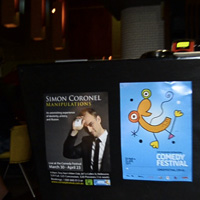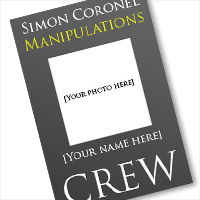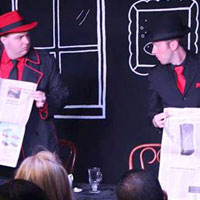Edinburgh: Choreography Diagrams
Manipulators - Live in Edinburgh just finished its second preview show. Both shows were 2/3 sold out, which is nothing short of amazing for a new and relatively unknown show at the EdFringe.
The show's opening routine, and the part that has taken by far the most time and effort, is a two-person synchronised Manipulation routine that Vyom and I perform together. The aim was for us to be flawlessly synchronised in order to A) look impressive, and B) introduce the two-equally-skilled-manipulators-working-together concept of the show.
The routine lasts for exactly 1 minute and 30 seconds, yet has taken more work than nearly the entire rest of the show put together. It's complex enough for one person to learn a manipulation sequence, let alone for two people to try and learn it so precisely that they can match every tiny gesture beat-for-beat.
One obvious thing that helps is having a piece of music to perform to, and after much deliberation (ie: shouting at each other as our different tastes in music became very apparent) decided to use a custom composed jazz track by the ever-capable Adam Brooks.
When choreographing routines to music in the past, I'd always done it mostly in my head by trial and error. I would perform the routine again and again as the music played, and over time the moves would start to organically link themselves to certain beats. However, we quickly realised that this wasn't going to work when two people had to be completely synchronised.
After many false starts and more "heated artistic debate", we started drawing diagrams. It's a deceptively simple trick that I originally learned from Dan Roam's excellent book Back of the Napkin - expressing things in diagrams makes them easier to communicate and understand. And it worked wonders. Once we started actually drawing the beats in the music and noting down which actions attached to which beats, the whole exercise started to flow much more smoothly.
Our apartment is now littered with pieces of paper covered with obscure notation (such as the title image above), and the routine is looking much more snappy. It'll still take a huge amount of rehearsal to get it really smooth, but if not for those diagrams we'd probably still be shouting at each other about choreography.




I guess I’ll have to check out that book, Back of The Napkin